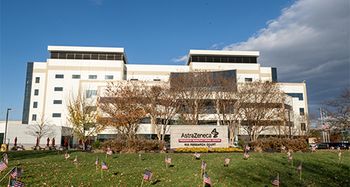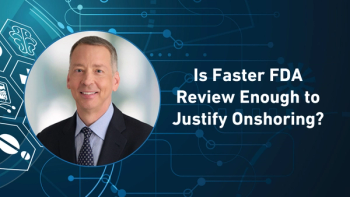
AI-Driven Planning Poised to Transform US Healthcare Supply Chain Resilience
In the final part of her Pharma Commerce video interview, Christy Christian, senior industry principal with Kinaxis, highlights a future where AI, cleaner data, and exception-based decision-making accelerate response times and strengthen end-to-end supply chain visibility.
Global trade tensions and shifting tariff policies are creating significant challenges for manufacturers as they work to maintain product availability on retail shelves. According to Christy Christian, senior industry principal with Kinaxis, these disruptions are not entirely new, but the pace and unpredictability of change have intensified. Manufacturers now face a rapidly evolving landscape where tariffs can shift overnight—from metals to paper to other key materials—making it difficult to maintain stable, long-term supply chain strategies.
A key issue lies in the extended and globally distributed nature of modern supply chains. Many companies source components or raw materials from regions far from where final products are assembled, which introduces delays and reduces flexibility in responding to sudden tariff changes. The cascading effects of such disruptions extend across tier one, tier two, and tier three suppliers, amplifying bottlenecks and vulnerabilities.
Traditionally, companies have mitigated supply chain risk by building inventory buffers. However, in today’s financial climate, organizations are less willing or able to tie up capital in excess inventory. Maintaining large stockpiles directly impacts free cash flow, which remains a top priority for many manufacturers. This constraint leaves supply chains with limited slack and little room for error when disruptions occur.
As a result, firms must find ways to optimize and adapt their networks within increasingly complex conditions. Agility—both in planning and execution—has become essential. Companies need to rapidly update sourcing strategies, reallocate inventory, and pivot operations in response to tariff shifts or supplier closures. Yet, the challenge is ensuring that adjustments happen quickly enough to prevent excess raw materials from arriving after market conditions have changed. In today’s volatile global environment, the ability to dynamically balance inventory, cash flow, and sourcing flexibility defines supply chain resilience.
Christian also comments on the hurdles that typically come with moving from manual spreadsheets to AI-powered orchestration in the healthcare supply chain, the reliability of AI-driven demand forecasts in the face of unpredictable events; how supply chain modernization directly affects the affordability and accessibility of OTC medicines; and more.
A transcript of her conversation with PC can be found below.
PC: What role do you see AI and predictive planning playing in shaping the resilience of US healthcare supply chains over the next three to five years?
Christian: When we think about where we are today, we still have traditional planning in many environments. When you look at a technology like Maestro through Kinaxis, we have concurrency. I have had exposure to Kinaxis even before I came here, when I was a practitioner. This notion of concurrency is something that they've always had. People are, well, what is that? Well, concurrency means that it's always on and it's bi-directional, so how does that feed improvement on decision latency? We have real-time, so when we have a disruption downstream, it's coming back upstream for evaluation, and vice versa.
Being able to have that visibility of changes that are happening in real-time to a plan allows your plan to become more executionable. Now, we're able to augment it. It's not I snap a line on the 10th day of the month, and that's my demand plan, and that's what you go build to. It's able to augment and adjust as we go. On top of that, you have scorecards, so you're making business decisions based on your metrics you define as important. Coming back to speed of AI, data integrity, and then that storytelling you to have the technology already.
The data is coming and getting cleaned as we go. AI is already here, and it's just going to continue to advance. As we think about the people aspect of this, which they're not going away, how do they leverage data, technology, and process to drive decisions? To me, that's where the future is going, and those decisions are going to happen faster, and they're going to continue to adjust, and people are going to get comfortable with doing exception-based planning versus “I need to plan everything.”
You don't need to plan everything. Technology is there to do that piece of it—you're going to do what technology can't. You're going to have those conversations with your key stakeholders, or even further out in your supply chain, to be able to have that visibility and bring it in your walls, so that truly, you're not siloed. You're looking at more of that outside-in type of planning.
Newsletter
Stay ahead in the life sciences industry with Pharmaceutical Commerce, the latest news, trends, and strategies in drug distribution, commercialization, and market access.




